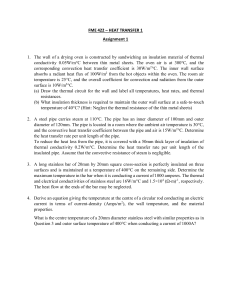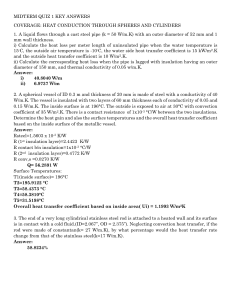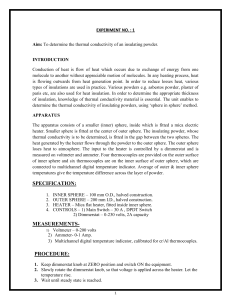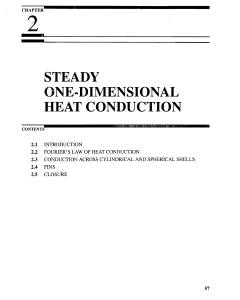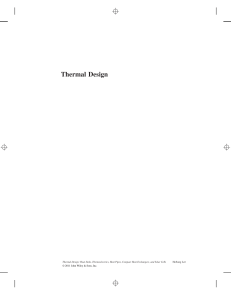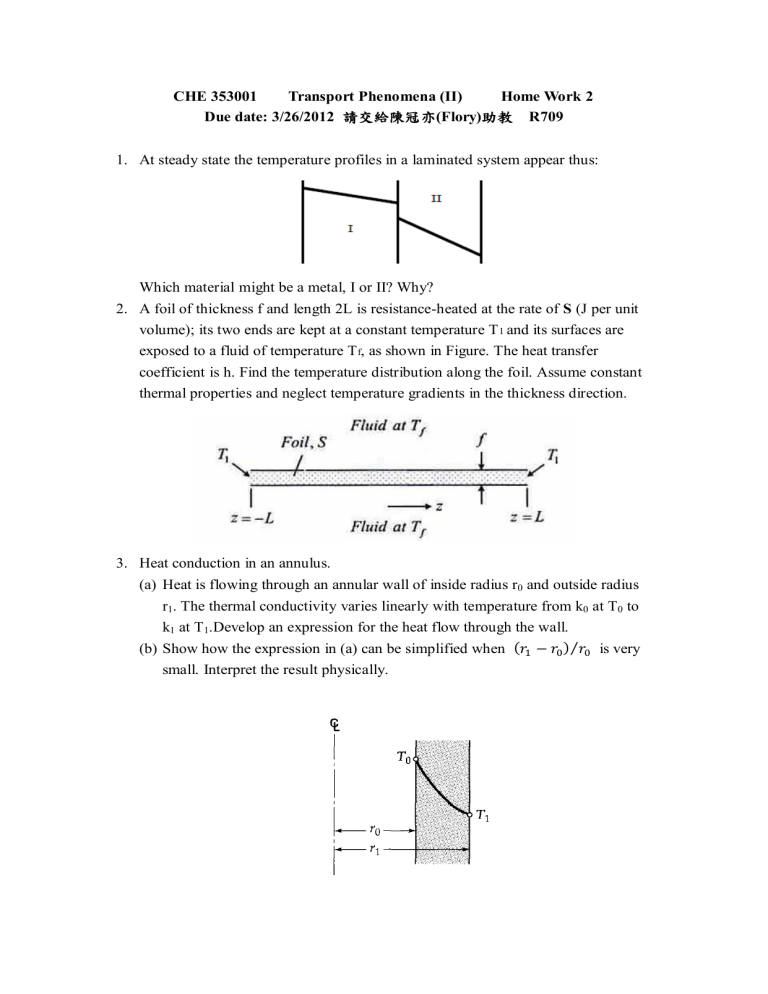
CHE 353001 Transport Phenomena (II) Home Work 2 Due date: 3/26/2012 請交給陳冠亦(Flory)助教 R709 1. At steady state the temperature profiles in a laminated system appear thus: Which material might be a metal, I or II? Why? 2. A foil of thickness f and length 2L is resistance-heated at the rate of S (J per unit volume); its two ends are kept at a constant temperature T 1 and its surfaces are exposed to a fluid of temperature T f, as shown in Figure. The heat transfer coefficient is h. Find the temperature distribution along the foil. Assume constant thermal properties and neglect temperature gradients in the thickness direction. 3. Heat conduction in an annulus. (a) Heat is flowing through an annular wall of inside radius r0 and outside radius r1. The thermal conductivity varies linearly with temperature from k0 at T0 to k1 at T1.Develop an expression for the heat flow through the wall. )⁄ is very (b) Show how the expression in (a) can be simplified when ( small. Interpret the result physically. 4. The extended surface (fin), which the fin surface area is As and the fin perimeter is P , is attached to a base surface of temperature T b at a surround temperature T ∞. Both thermal conductivity k and heat transfer coefficient h are assuming to be constant. (a) If the cross section area Ac varies with x-direction, derive the differential equation. (b) If the fin is very long and the cross section area Ac becomes uniform, derive temperature distribution. 5. A 2 in. steel pipe (o.d.=60.5mm, i.d.=52.9mm, thermal conductivity =60 W⁄𝑚℃) is lagged with insulation material (thermal conductivity = 0.12 W⁄𝑚℃), the steam at temperature 300℃ is flowing inside the pipe. The convective heat transfer coefficient between the steam and the pipe is 1000𝐽⁄𝑚2𝑠℃. The surrounding air is at 25℃, the convective heat transfer coefficient between the pipe and the air is 2 𝐽⁄𝑚2𝑠℃ (a) Find the heat loss per unit length of pipe if no insulation is used on the pipe. (b) If 10mm of insulation is used, what is the heat loss per unit length of the pipe. (c) Comment on the result of (a) and (b) . (d) Is it possible to have the maximum heat loss? Please Explain.

